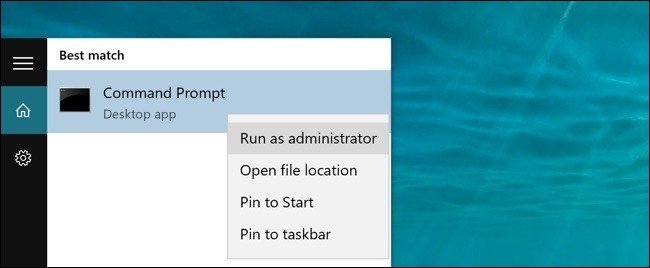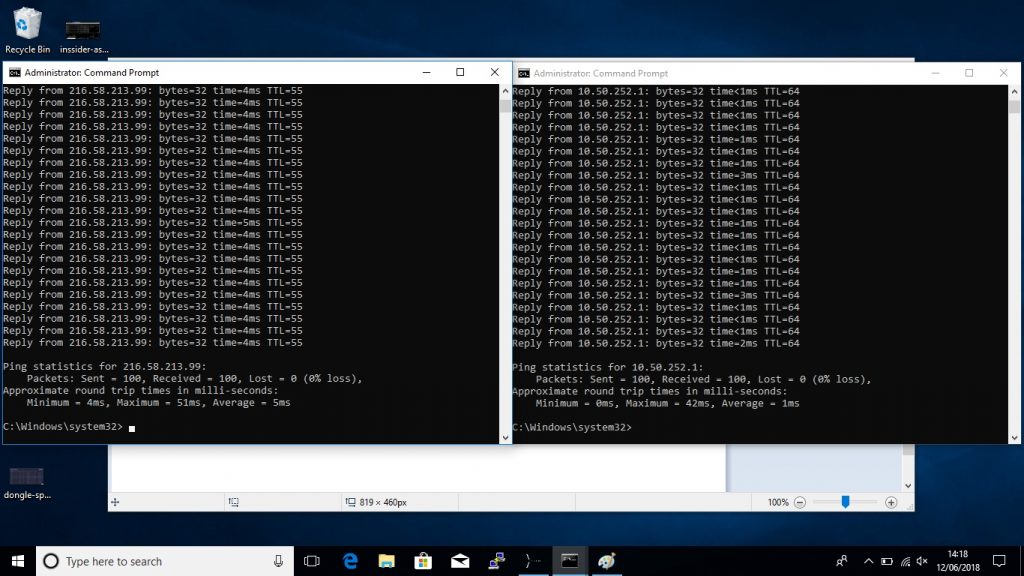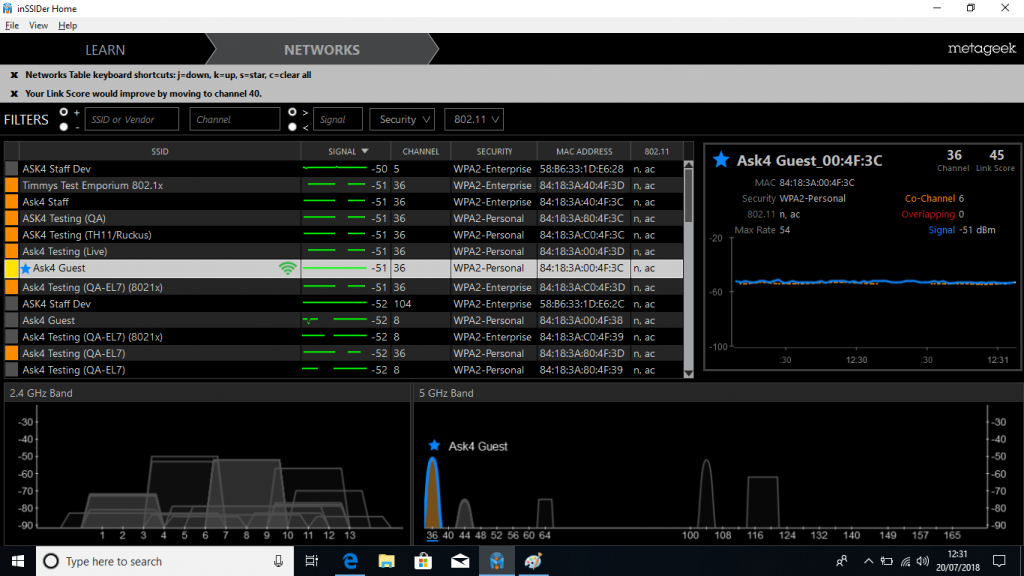Connectivity Issues – WiFi – Windows
WiFi Diagnostics
Our Support team require 3 tests from your unique location, to be performed while the issue is occurring.
- Click the start menu icon and search for ‘CMD’

- Right click the ‘Command Prompt’ application and ‘Run as Administrator’ You will need to open two of these windows.

- Line up the windows side by side and enter the following commands, one in each window:
First window: ping google.co.uk -n 100
Second window: ping gw -n 100

Press Enter to start the command in each window.
- Allow all 100 pings to be completed. You will know when the test is finished as the text will stop scrolling and you will see the words “ping statistics“
- Take a screenshot of the results, without cropping the image so that we can see the time stamp
- Download and install the free version of inSSIDer from Here.
- Open the inSSIDer application and drag the window to display all or most of the networks
- Expand the MAC address column to show all of the characters and sort the Signal Column to show best to worst. An example of this can be seen below.
- Take a screenshot of your whole screen, so that the time is visible in the corner.
This screenshot should be taken in the specific position you are experiencing the problem, for example at your desk. -
Sending Your Screenshots
Take a screenshot of your whole screen, so that the time is visible in the bottom right corner.
We require this screenshot to be taken from the location in which you experience the problem.
The screenshots should be saved to your desktop as .PNG or .JPG files. These need emailing to the ASK4 Support team so that they can be analysed further. To do so, please send an email to the following address: support@ask4.com
Required information (please put this in the body of the email):
- Your full name
- Your building name, address and block/flat/room number
- Your contact number (optional)
- Your ASK4 username (optional)
- Your ASK4 issue reference number
First things first – How to take a screenshot
To take a screenshot, press the Print Screen key on your keyboard, it may appear as “prt sc” or “prt scrn”. This will automatically save the screenshot to your ‘Screenshots folder’ or wherever you have configured it to save.
Testing the latency (Ping Test):
In order to test connectivity and latency, we can instruct your computer to send and receive small amounts of data to one of Google’s servers, and to the equipment at your accommodation (these are called pings). For this we can use an application called Command Prompt, which is installed on your computer by default.
Your screenshot should look something like below:
 These Command Prompt windows must be left open while the problem is occurring.
These Command Prompt windows must be left open while the problem is occurring.
Testing the speed
Please visit speedtest.net and click on ‘Begin Test.’ The test will begin and will perform three tests, one for Ping, Download Speed and one for Upload Speed.
Once the tests have completed, you will be presented with your results, please take a screenshot of this and name it Speedtest. An example:

Scanning your WiFi Environment (inSSIDer Test):
To see the wireless environment as your device does, we can use a free application called inSSIDer. This app helps us to check for interference from other wireless networks or for problems with the equipment.

